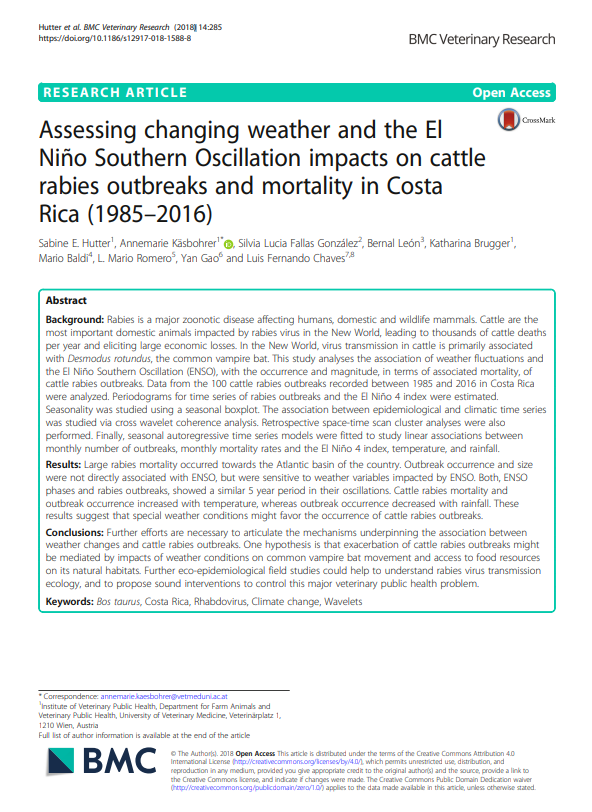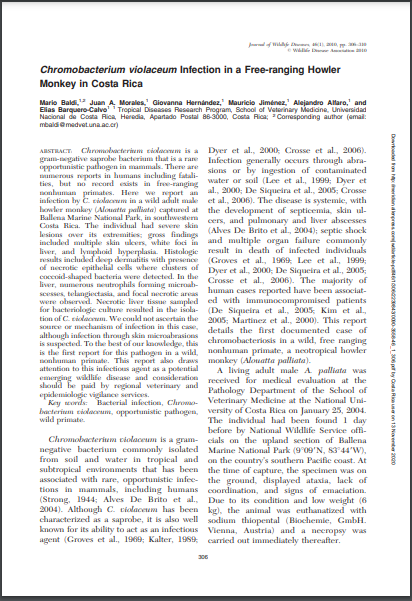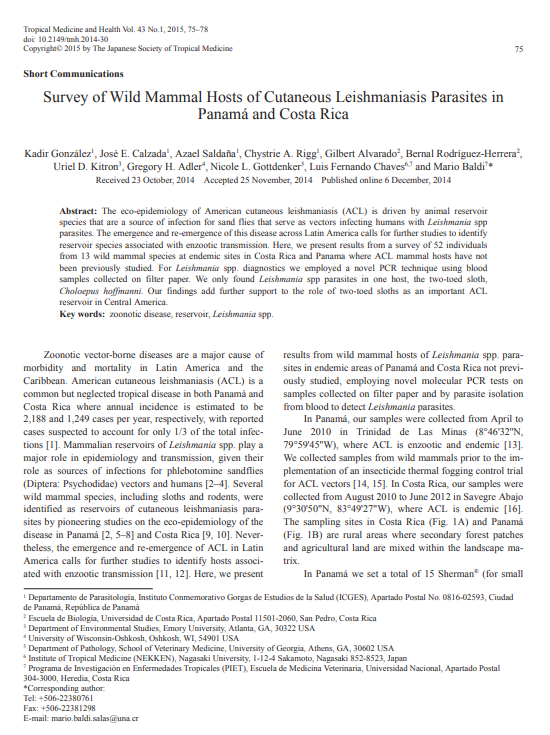Browsing Facultad de Ciencias de la Salud by Author "21f27115-ebaa-44a2-9fcc-21b204d7d32b"
Now showing items 1-3 of 3
-
Assessing changing weather and the El Niño Southern Oscillation impacts on cattle rabies outbreaks and mortality in Costa Rica (1985–2016)
Sabine, E. Hutter; Käsbohrer, Annemarie; Fallas González, Silvia Lucía; León, Bernal; Brugger, Katharina; Baldi, Mario; Romero-Vega, L. Mario; Gao, Yan; Chaves, Luis Fernando (BMC Veterinary Research, 2018-09-17)Background: Rabies is a major zoonotic disease affecting humans, domestic and wildlife mammals. Cattle are the most important domestic animals impacted by rabies virus in the New World, leading to thousands of cattle ... -
Chromobacterium violaceum infection in a free ranging howler monkey in Costa Rica
Baldi, Mario; Morales, Juan Alberto; Hernandez, Giovanna; Jiménez-Soto, Mauricio; Alfaro-Alarcón, Alejandro; BARQUERO-CALVO, ELIAS (Wildlife Disease Association, 2010)Chromobacterium violaceum is a gram-negative saprobe bacterium that is a rare opportunistic pathogen in mammals. There are numerous reports in humans including fatalities, but no record exists in free-ranging nonhuman ... -
Survey of wild mammal hosts of cutaneous Leishmaniasis parasites in Panamá and Costa Rica
GONZÁLEZ, KADIR; CALZADA, JOSÉ E.; Saldaña, Azael; Rigg, Chystrie A.; Alvarado, Gilbert; Rodríguez-Herrera, Bernal; KITRON, URIEL D.; Adler, Gregory H.; GOTTDENKER, NICOLE L.; Chaves, Luis Fernando; Baldi, Mario (The Japanese Society of Tropical Medicine, 2014-12-06)The eco-epidemiology of American cutaneous leishmaniasis (ACL) is driven by animal reservoir species that are a source of infection for sand flies that serve as vectors infecting humans with Leishmania spp parasites. The ...



